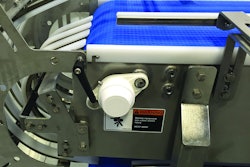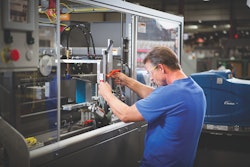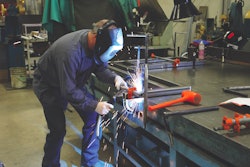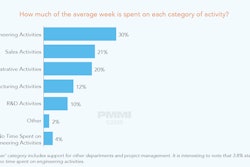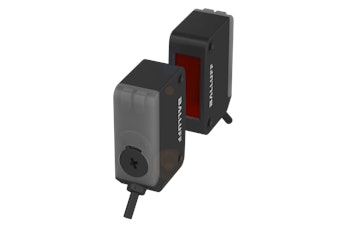At a time when our industry, technology, and the marketplace are changing at a record pace, have you noticed that your sales team is struggling to develop new customers or grow existing accounts?
Due to complexity in the packaging and processing space, many OEMs retain long-standing sales teams with lots of industry knowledge and experience. But these teams are having a harder time adapting how they sell to support customers’ changing needs. This often results in too much time with current customers instead of reaching out to new ones.
Today, leading OEMs are developing sales organizations that can navigate a new, more complex sales environment where online access to machine specifications is the norm, and customers expect a solution that supports their business. But they don’t want to lose the vast experience their current team brings.
2016 Sales Leadership Study
Growth Dynamics (GDI) conducted a study of over 1,300 leading North American manufacturers, and found that 72 percent of C-level executives’ top goal was new business growth. But the greatest leadership challenge they faced was attracting, hiring, and developing the “right” talent in the company, specifically in the sales force.
In fact, 82 percent of manufactures validated significant changes in customer expectations and buying habits since 2013, while 72 percent were challenged in hiring and developing a sales team that fit their business and customers. Meanwhile, 43 percent noted challenges with an aging sales organization that is struggling to adapt.
Up from 56 percent in 2013, 73 percent of today’s sales organizations are remote—working from a home office or independently in the field—which can have an isolating effect. The study also showed a significant increase in travel for both sales people and field sales leadership, creating greater challenges for sales management to engage, coach, or drive sales accountability from a distance, or without regular contact.

This type of work environment makes it easy to breed bad habits, spend too much time with existing customers, and get rusty at developing new business. This can also impact a sales professional’s confidence to forge ahead in a complex, ever-changing, and competitive marketplace. So, they focus on what—and whom—they know best. This leads to minimized territory saturation and market stagnation.
Defining top performance in sales is “simply complex”
Any sales professional today will tell you that customers have changed the way they buy. So, what is getting in the way of the sales team changing how they sell so they can be successful developing new business and new customers? More often than not, the sales team wants to change, they just don’t know how, or are unsure what they are supposed to do differently. And leadership wants them to improve as well, although they are unsure how to lead the team in the right direction.
While many companies still seek to generalize the role of sales, top sales leaders realize they must constantly re-define the sales process and define top performance or the standard of success in sales to select, develop, lead, and retain the right sales force that performs. A well-defined top performance benchmark establishes a proven method for targeted selection, and sets the foundation for sales leadership to create buy-in and lead the team through change.
To define top performance, it is crucial to analyze the complexity of the sales role. This may include:
- Ideal/target customer
- Sales complexity or difficulty
- Customer environment/market pressures
- Customer buyer/decision-maker types
- Ideal/target sale
- Sales process/methodology
- Current vs. new customer development
- Competition/marketplace
- Success/failure in the role
- Skills/technical knowledge required
Compensation model
Leadership capability
With top performance defined, leadership is armed with the tools, processes, and metrics to effectively choose the right people, show the team how the role has changed, get buy-in, and lead measurable accountability in shifting how they sell.
How do you get the sales team to change?
This is the number one question we receive at GDI. And the answer is simple. You engage the sales team at the beginning of the process, make them part of defining top performance, and create transparency. By engaging them in the process, they realize they are part of the effort and accountable for the outcome, so it’s an outcome they must support.
A well-developed sales force intelligence program gives leadership answers they need to guide change. It also gives the sales team a voice on what they perceive their role to be, where they focus their time, and what successes and challenges they face with competition, new business development, and growing their marketplace. Engagement equals accountability.

The result of sales team transformation: leading change
To help a sales team be part of transforming their efforts, leadership must share results of the top performance benchmark and educate the team on how its role has changed. What is top performance in the role, and how can team members apply their skills, strengths, and efforts to adapt new ways to sell? This aligns with targeted team training and reinforcement to establish a foundation for improved performance.
When benchmarks of top performance are developed and sales force intelligence is gathered, leadership may come to realize the issue isn’t necessarily that a team member is the wrong person. Generally, it is that they are not focused on the right things, or not devoting the time or effort needed to develop new business. Or sometimes, they are simply doing what comes easiest instead of what is needed to assure territory growth and saturation.
Today, leading, developing, and retaining a top performing sales organization requires more than just competitive pay and incentives. It requires having a clear definition and process of how to select, develop and lead the right sales team that fits your company and adapts to your customers’ needs and expectations. It requires arming the team with the tools, training, and support to develop new business and new customers for growth and success.
Transforming a sales organization is an ongoing evolution that requires consistent leadership focus and performance accountabilities to reinforce change and maintain momentum. By defining top performance in sales and gathering sales force intelligence, you will establish a foundation for sales force transformation and team growth.





